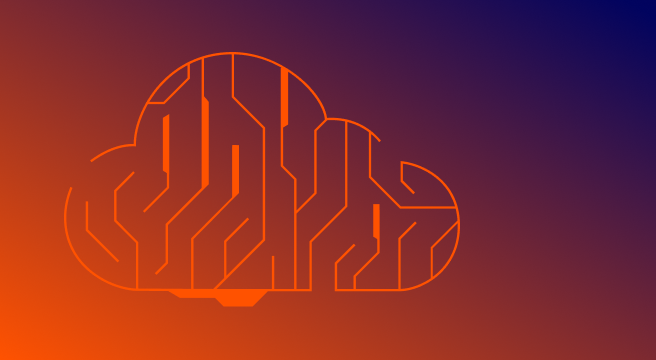Data Security Posture Management (DSPM) use cases
Published | August 8, 2025 |
Learn about common DSPM use cases and how modern solutions can help you act on them
Data security posture management (DSPM) supports a range of cloud security and compliance use cases. From preventing cloud data breaches and enforcing least privilege to detecting shadow IT and enabling DevSecOps, DSPM delivers visibility and context across your cloud data environment.
What is DSPM and why do you need it?
Data security posture management (DSPM) gives you continuous visibility into where sensitive data lives, who can access it and its exposures. A DSPM platform connects the dots between data classification, access analysis, configuration risk and exposure paths to prioritize the risks that matter most to your organization, not just a static vulnerability score.
Modern DSPM tools support multi-cloud and SaaS environments, integrating with cloud providers like AWS, Azure and Google Cloud. They work alongside cloud security posture management (CSPM), cloud infrastructure and entitlements management (CIEM) and cloud-native application protection platform (CNAPP) solutions to give your security and compliance teams deeper control over cloud data risk.
Why DSPM use cases matter
If you're evaluating a DSPM solution, it's not just about discovering sensitive data. It's about solving real-world problems:
- Can you stop data breaches before they happen?
- Can you prove compliance with all your regulations?
- Can you reduce alert noise and focus on real data exposure risk?
- Can your developers understand how their code interacts with sensitive data?
Use cases help you connect DSPM capabilities to business outcomes.
Top DSPM use cases in practice
Here's a list of some of the top use cases for DSPM:
1. Cloud data breach prevention
Most cloud breaches start with simple missteps, public storage buckets, over-permissioned service accounts or unencrypted sensitive data.
DSPM helps you spot these dangerous combinations before attackers do. It maps misconfigurations directly to the data they expose and identifies high-impact risks like external-facing assets tied to sensitive datasets.
2. Data privacy compliance
Regulations require you to control access to personal and regulated data.
DSPM supports compliance by continuously discovering sensitive data types, mapping who can access them and flagging violations of access control or residency policies. It also supports reporting and evidence collection for audits.
3. Audit readiness
Auditors want proof: data inventories, access logs, retention policies, encryption coverage.
DSPM provides a living record of your cloud data landscape. When paired with CSPM, you get comprehensive evidence across data and infrastructure.
4. Least privilege enforcement
Reducing identity risk in the cloud starts with limiting access to data.
DSPM platforms analyze permissions across users, roles and applications, identifying excess privileges and enabling access reviews.
Combined with CIEM capabilities, it helps you enforce least privilege across identities and data assets.
5. Shadow IT and shadow AI discovery
Not all cloud data risk lives in sanctioned tools. Employees often use unauthorized services like generative AI platforms, SaaS tools or personal storage apps.
DSPM detects these unsanctioned data repositories, known as shadow data, and alerts teams to sensitive data exposure outside approved systems.
6. DSPM in DevSecOps
Security is a pipeline priority. DSPM tools with developer-facing integrations can:
- Detect risky data access during infrastructure-as-code deployments
- Help teams fix misconfigurations before they reach production
- Automate guardrails to prevent sensitive data from landing in the wrong place
DSPM gives developers the feedback they need to build more secure services, without slowing velocity.
DSPM industry-specific use cases: Why DSPM matters across industries
Each industry faces unique data protection challenges. Here's how DSPM can help:
Financial services
Financial companies deal with tons of sensitive customer information like banking information, credit card numbers and trading algorithms. The regulations, such as PCI DSS, SOX and GDPR, are strict.
Your challenge: Sensitive data often lives in multiple databases, cloud storage and legacy systems, sometimes hidden in shadow IT. You must ensure only authorized users have access and that you’ve logged every action for audits.
How DSPM helps: DSPM in finance automatically discovers and classifies financial and personal data across cloud and on-prem environments. It monitors access patterns to spot insider threats or unauthorized attempts. DSPM flags over-privileged or dormant accounts and enforces least privilege policies. It also ensures data encryption meets PCI DSS requirements, helping you avoid breaches and penalties.
Healthcare
Healthcare data includes protected health information (PHI), medical records and research data. Regulations like HIPAA and standards like HHS 405 (d) demand strict privacy while allowing quick patient care access.
Your challenge: You must protect PHI across electronic health record (EHR) systems, imaging archives and research platforms while avoiding cloud misconfigurations that expose data.
How DSPM helps: DSPM in healthcare identifies and labels PHI wherever it’s stored. It prioritizes risks like publicly accessible storage buckets or unencrypted patient databases. DSPM can automatically fix insecure cloud settings, apply encryption and track how patient data moves across applications and third-party platforms so you remain compliant and audit-ready.
Retail and e-commerce
Retailers process vast customer transactions and store sensitive PII and payment data. Fast-paced cloud deployments and frequent third-party integrations introduce new risks.
Your challenge: To secure customer databases, payment gateways and loyalty program data across multi-cloud environments. Rapid updates and integrations can create misconfigurations that expose sensitive data.
How DSPM helps: Data security posture management in retail and e-commerce discovers and classifies PII and payment data in customer relationship management (CRM) systems and e-commerce platforms. It monitors cloud configurations for PCI DSS compliance and detects risky misconfigurations in web application firewalls or API gateways. DSPM also alerts you to unusual data transfers so you can respond quickly to potential breaches.
Manufacturing and industrial control system (ICS)
Manufacturers increasingly connect IT and operational technology (OT) systems, which creates new security challenges. You must protect intellectual property, proprietary designs and critical production data from espionage or sabotage.
Your challenge: Sensitive design files, manufacturing processes and supply chain data often span on-prem file shares, product lifecycle management (PLM) systems and specialized cloud environments. Converging IT and OT systems create more attack paths.
How DSPM helps: DSPM in manufacturing and ICS discovers and categorizes sensitive IP and manufacturing data in IT and OT systems. It enforces access controls so only authorized engineers and partners can reach critical data. DSPM also detects misconfigurations in cloud instances tied to IoT or SCADA systems and alerts you to suspicious access or data flows that could disrupt operations.
Cross-functional outcomes with DSPM
DSPM aligns multiple teams:
- Security teams get high-fidelity alerts tied to data risk.
- Privacy and compliance gain visibility into sensitive data access.
- IT and infrastructure teams get posture insights across cloud services.
- Engineering gets context to secure apps and workflows.
DSPM also facilitates collaboration during incident response by surfacing data context directly in security information and event management (SIEM) or security orchestration, automation and response (SOAR) tools.
Teams can quickly understand which sensitive assets are at risk, reduce dwell time and improve containment.
For example, if the system detects a misconfiguration on a database, DSPM shows if it has regulated data, who accessed it recently and if it observed any suspicious behavior.
How Tenable supports DSPM use cases
Tenable Cloud Security offers DSPM as part of a unified exposure management platform that includes CSPM, CIEM and cloud vulnerability management.
Tenable helps you:
- Discover and classify sensitive data across multi-cloud environments
- Map exposure paths and toxic combinations that lead to breach
- Identify shadow IT and risky AI tools storing sensitive data
- Prioritize and remediate data risks based on sensitivity and exploitability
Explore how Tenable Cloud Security supports critical DSPM use cases for modern, cloud-first teams.
DSPM resources
DSPM products
Cybersecurity news you can use
- Tenable Cloud Security
- Tenable One

